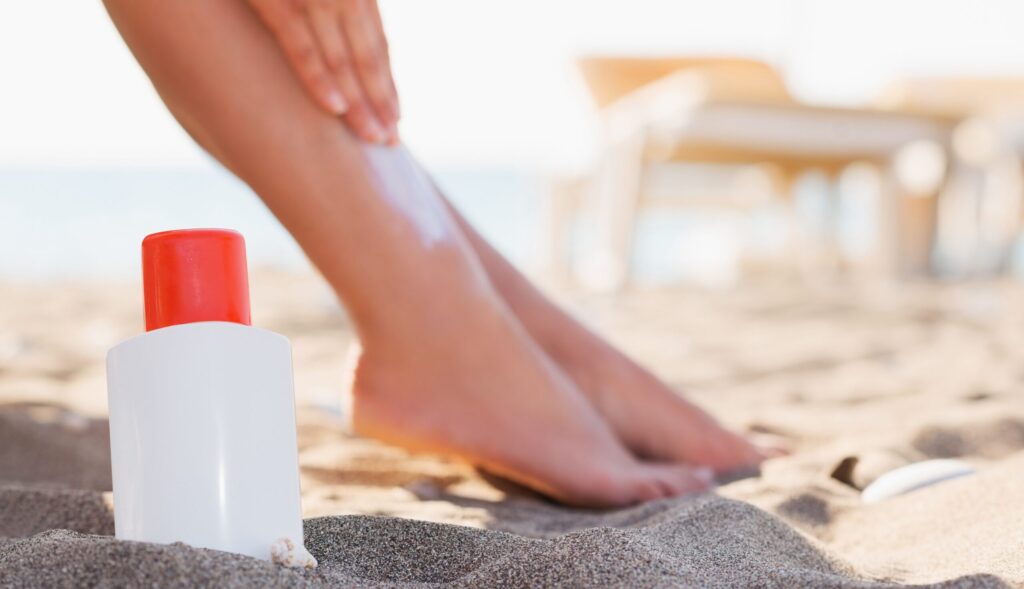Sunscreen is a critical tool in protecting our skin from the harmful effects of UV radiation. However, with a multitude of options available, it can be challenging to navigate the differences between physical and chemical sunscreens.
Physical vs. Chemical Sunscreens: Understanding the Basics
Physical Sunscreens (Mineral Sunscreens):
- Contain active mineral ingredients such as zinc oxide or titanium dioxide.
- Work by sitting on top of the skin and deflecting or scattering UV rays.
- Provide broad-spectrum protection against both UVA and UVB rays.
- Typically thicker in consistency and may leave a white cast on the skin.
Chemical Sunscreens:
- Contain organic (carbon-based) compounds such as avobenzone, octinoxate, or oxybenzone.
- Absorb UV radiation and convert it into heat, which is then released from the skin.
- Offer broad-spectrum protection but may degrade over time when exposed to sunlight.
- Tend to have a lighter texture and blend more seamlessly into the skin.
Pros and Cons:
Physical Sunscreens:
- Pros: Gentle on sensitive skin, provide immediate protection upon application, less likely to cause irritation or allergic reactions.
- Cons: May feel heavier on the skin, leave a white residue, require more frequent reapplication, can be less water-resistant.
Chemical Sunscreens:
- Pros: Lightweight texture, easy to apply and blend, offer more options for formulations (e.g., sprays, gels, lotions).
- Cons: May cause irritation or stinging in individuals with sensitive skin, require time to absorb into the skin before becoming effective, may trigger allergic reactions in some people.
Effectiveness and Protection:
“Both physical and chemical sunscreens offer effective protection against UV radiation when used correctly,” Says Dr. Adam Mamelak, Dermatologist and skin cancer specialist in Austin. However, physical sunscreens are often preferred for their broad-spectrum coverage and immediate protection, making them suitable for individuals with sensitive skin or those prone to sunburn. Chemical sunscreens, on the other hand, are favored for their lightweight texture and ability to blend seamlessly into the skin, making them ideal for everyday use under makeup or during outdoor activities.
Common Ingredients and Functions:
- Zinc Oxide: Found in physical sunscreens, provides broad-spectrum protection against UVA and UVB rays, and offers soothing properties for sensitive skin.
- Titanium Dioxide: Another mineral ingredient in physical sunscreens, reflects and scatters UV radiation while remaining gentle on the skin.
- Avobenzone, Octinoxate, Oxybenzone: Common chemical filters found in chemical sunscreens, absorb UV radiation and convert it into heat, providing broad-spectrum protection.
- Mexoryl: An advanced chemical filter found in some sunscreens, Mexoryl offers effective protection against UVA rays and is often combined with other UV filters for enhanced broad-spectrum coverage.
Recommendations for Different Situations:
Children: Physical sunscreens are often recommended for children due to their gentle formulation and broad-spectrum protection. Look for options specifically labeled as “child-friendly” or “pediatrician-approved.”
Face vs. Body: Chemical sunscreens may be preferred for the face due to their lightweight texture and compatibility with makeup, while physical sunscreens are suitable for the body, especially areas prone to sunburn or irritation.
Conclusion: Finding Your Perfect Sunscreen Match
Choosing the right sunscreen is a personal decision that depends on individual preferences, skin type, and specific needs. Whether you opt for a physical or chemical sunscreen, the most important factor is consistency in application and reapplication to ensure adequate protection against UV radiation. Experiment with different formulations to find the sunscreen that best suits your skin and lifestyle, and remember that sun protection is essential year-round, not just during sunny days at the beach.

